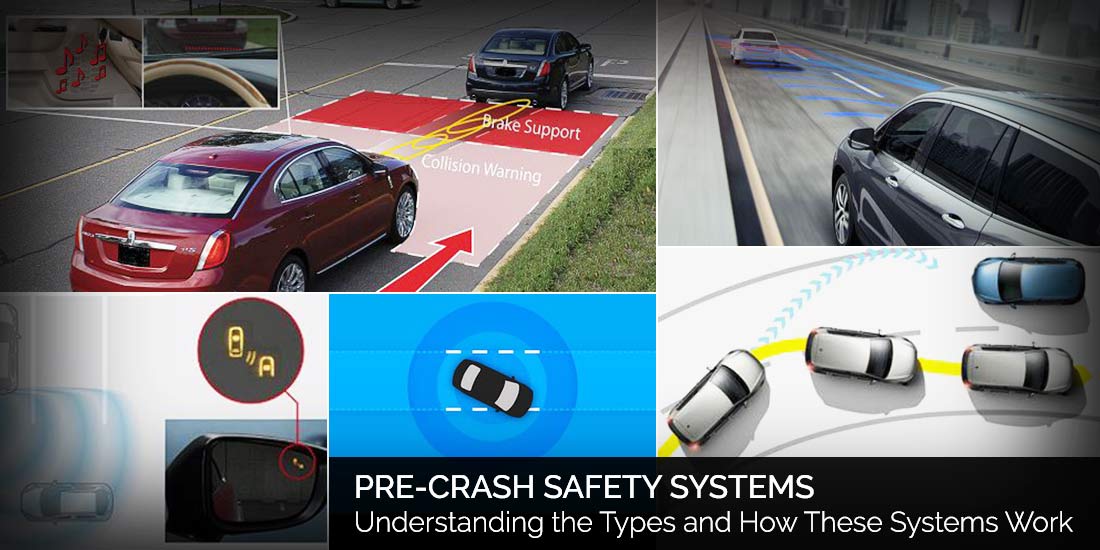The safety features in vehicles have become more advanced and better with time. The auto manufacturers have been working tirelessly to enhance, update and improve their safety features so that their vehicles are better and more secure for the car enthusiasts.
Since safety is one if the major concerns for everyone on the road, car brands have been trying to bring as many new, better and improved features as they can. Distracted driving is quickly becoming a common problem and it has given rise to car accidents and crashes.
In 2014, 3,179 people were killed because of distracted drivers. Texting while driving or using mobile phone while driving has become a primary reason behind car accidents. Distracted driving is a danger to everyone on the road, regardless of the fact that they are driving properly or not.
This is where safety features such as Pre-Crash Safety Systems come in. These safety features are often a standard safety feature on new cars, however, they are always available as an optional feature. The Pre-Crash Safety Systems work together or individually to bring the best level of security to the driver, the passengers and the people on the road.
If you want to purchase a new car, you should try to look for a vehicle with Pre-Crash Safety Systems in it. To help you make the decision, we will discuss all different types of Pre-Crash Safety Systems and you can decide for yourself if they are for you or not.
But first, let us discuss what Pre-Crash Safety Systems are.
Pre-Crash Safety Systems
The Pre-Crash Safety Systems are designed and made to detect any crash, detect any potential danger, alert the driver and take the necessary security measures to avoid any collision that can or cannot be fatal. The Pre-Crash Safety Systems use sensors, actuators, cameras and radars to operate and keep an eye on the road and the vehicles around you.
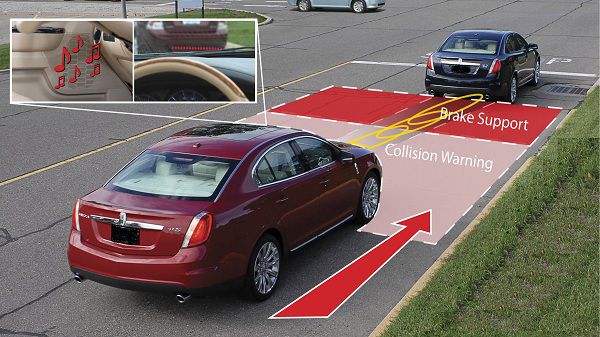
The vehicle that is fitted with a Pre-Crash Safety System will simply warn the driver with a visual and audible warning in case of a potential crash. There are some Pre-Crash Safety Systems that can even stop the vehicle or pulsate the brake to get the attention of the distracted driver, however, that depends upon the system installed in the vehicle.
The sensors used by Pre-Crash Safety Systems include:
- Occupant Sensors
- Vehicle Speed Sensors
- Remote Sensors
- Pedestrian Sensors
- Seat-Belt Sensors.
The Pre-Crash Safety Systems use these sensors to make the right predictions and keep everyone safe. The sensors work together to find any obstacle in front of the vehicle, measure the angle of the impact, measure the speed of collision, the intensity of the impact and the direction of the impact so that it can present the right information to the driver.
The Pre-Crash Safety Systems work best on open roads where there be less traffic and more road, like a highway. The Pre-Crash Safety Systems can be an issue for city drive, especially when you are driving in heavy traffic and vehicles are coming at you from all directions.
Also read: 6 Essential Car Safety Features for Nighttime Driving
The Types of Pre-Crash Safety Systems
Almost every brand has their own version of the Pre-Crash Safety Systems. This is because when a company upgrades any safety system, they tend to change the name or make light changes in it so that they can mark their own changes and truly own them.
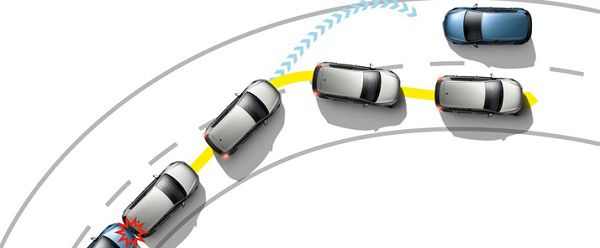
There are three basically three main types of Pre-Crash Safety Systems. These are:
- Blind Spot Detection
- Forward Collision Warning System
- Lane Departure Warning and Prevention
Blind Spot Detection
Blind Spot Detection or Blind Spot Monitoring System is very self-explanatory. This Pre-Crash Safety System will keep an eye on the blind spots that the driver might have while driving the vehicle. The Blind Spot Detection will keep an eye on the side and the rear of the car so that it can easily distinguish the speed and distance between the vehicle and the vehicle approaching it.
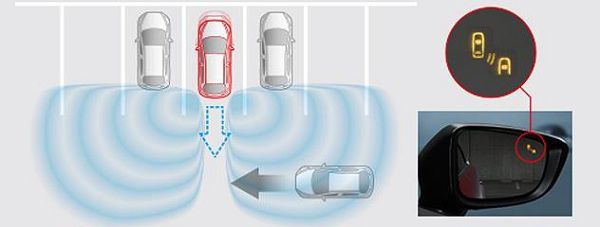
This is done so that this Pre-Crash Safety System can easily alert the driver in case there is a chance of a collision. The Blind Spot Detection uses tactile, visual and audible warnings so that it can get the attention of the driver and ensure that the driver has taken the necessary actions.
The Blind Spot Detection System will give a different warning for different situations. For example, the system will give a visual warning to the driver if a vehicle is occupying the blind spot. In case the driver turns on the turn signal and wants to move into an already occupied area, the system will give an audible of vibration warning.
If the need arises, then this Pre-Crash Safety System can even stop the driver from moving forward and stopping it from getting into a dangerous collision.
Forward Collision Warning System
This is one of the most common types of Pre-Crash Safety Systems that are used all over the world in new vehicles. If this is not a standard safety feature in your vehicle then it will definitely be available as an optional feature in your vehicle.
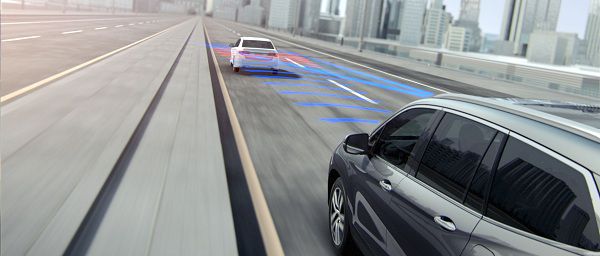
The Forward Collision Warning System was first demonstrated to the world at the Hughes Research Laboratories in Malibu, California in 1995. The first vehicle that had this Pre-Crash Safety System as a safety feature was the Volvo S40 and later it was made an integral part of the Cadillac STS series.
To ensure complete safety, the Forward Collision Warning System uses lasers, cameras, all-weather radars and GPS sensors to detect any upcoming danger that might end in a collision or not. This danger can be of a vehicle or even a stop sign.
If the system detects any danger, it will warn the driver and when he driver does not take any necessary actions, it will take the matters into their own hands and stop the car. There are more advanced versions of the Forward Collision Warning Systems that can do even more than just stopping the vehicle.
For example, when the vehicle is being driven below 50 Km/h, the Forward Collision Warning System will apply the brakes. If the vehicle is being driven at a very high speed, this Pre-Crash Safety System will automatically steer the car away from the collision.
Also read: Emergency Brake Assist – Car Safety Feature for Safe Braking
Lane Departure Warning and Prevention
The first ever lane Departure Warning and Prevention System was first offered in 2001 by Nissan Motors and of course, with time, this safety feature was offered by many other brands. Since it was updated and improved by many other brands, they have their own names for it.
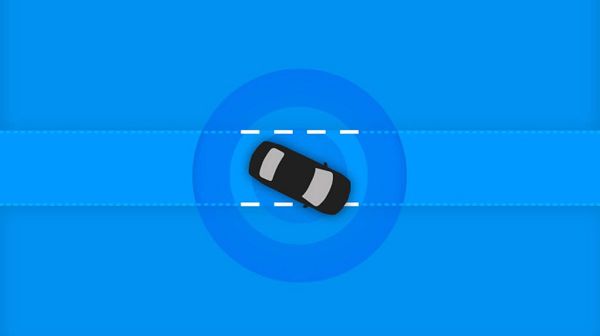
It is one of the most commonly found Pre-Crash Safety Systems that are either available as an option or it is a standard feature on many cars. As the name suggests, this Pre-Crash Safety Systems is designed and made to warn the driver if the vehicle is moving out of its lane.
Since this issue usually occurs if the driver is distracted, if the driver is drowsy or if the driver is making an error, it corrects these issues directly. There are three further types of Lane Departure warning and Prevention Systems. These are:
Lane Departure Warning
Lane Departure Warning or LDW will warn the driver if the vehicle is moving out of its lane. If the system detects any such action, it will warn the driver with an audible visual or vibration warning so that he can take the necessary action.
Lane Keeping System
Lane Keeping System can also be found under the name Lane Keeping Assist. The system will first warn the driver to maintain his lane, if the driver does not take the necessary actions, it will take actions to move the vehicle back into the lane.
Proactive and Reactive System
The proactive and reactive system is an intelligent system that will take the necessary actions whenever they are needed. These types of Lane Departure Warning and Prevention system uses three types of sensors.
These sensors are:
- Laser Sensors: The laser sensors are mounted beside the rear view mirror or the behind the windshield screen.
- Video Sensors: The video sensors are mounted at the front of the vehicle so that they can keep a better eye on the road.
- Infrared Sensors: The infrared sensors are mounted behind the windshield screen or under the vehicle.
These three types of Lane Departure Warning and Prevention can be in the vehicle together or you may find them individually. Rest assured, these Pre-Crash Safety Systems are always there and active to help you remain in your lane and keep safe.
Are Pre-Crash Safety Systems Absolute?
Although Pre-Crash Safety Systems are really good and they can definitely make a dire situation better by providing assistance at the right time, they are not absolute. The owners of the vehicles with Pre-Crash Safety Systems feel more confident and comfortable while driving, however, the responsibility of the people on the road and the passengers is still on the driver.
Yes, the Pre-Crash Safety Systems do help, but at the end of the day, it is the driver who would have to take the necessary actions to keep everyone safe. The Pre-Crash Safety Systems are no substitute for the driver, so keep that in mind while you are driving a vehicle with Pre-Crash Safety Systems.
Planning to buy a new car and want to sell your old? Then get an online valuation of your used car first and sell it in no time at SellCarGetCash.com.


